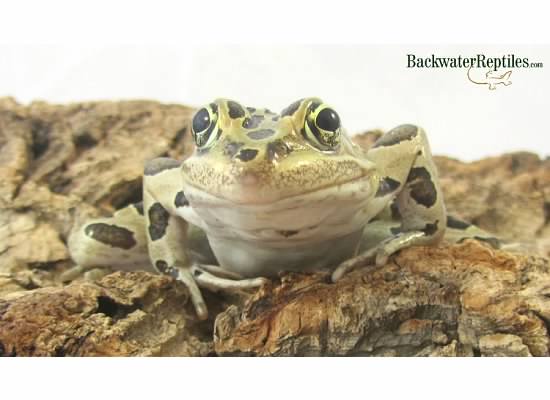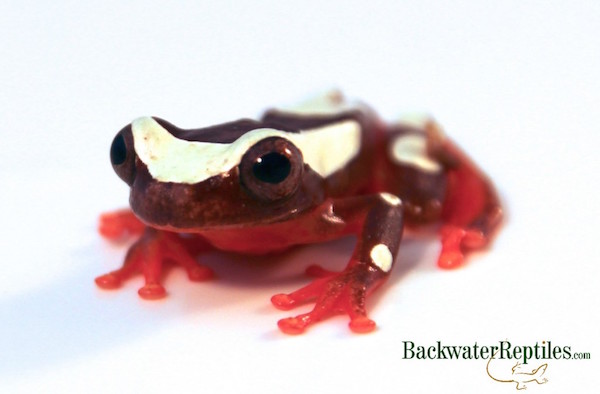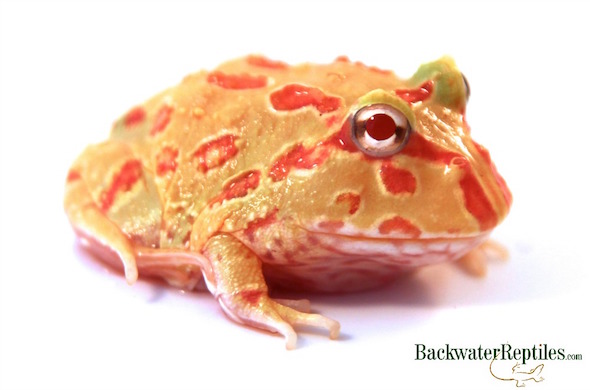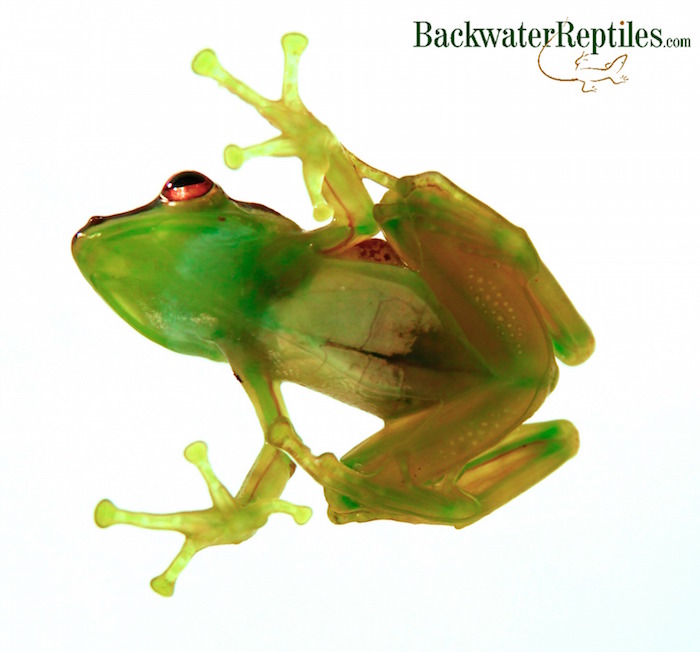What are the best pet frogs, you may be wondering? Backwater Reptiles offers many frogs for sale ranging from exotic, rare, and “specialty” frogs to more common “everyday” frogs. This list represents the top five frogs we think are best suited to be kept as pets, whether you’re a beginning hobbyist or an experienced herper.
#5 – Leopard Frog (Rana pipiens)
Leopard frogs are extremely common in America and have a wide habitat range. Although they are not as neon in color as some of their arboreal cousins, they are very easy to keep and make great beginner pets due to their minimal care requirements and hardy nature.
These frogs generally reach just over four inches in length when full-grown and are easy to breed in captivity. They are not picky eaters and can even live outdoors in a pond-like environment.
Leopard Frogs can be housed together, but make sure that the frogs are all of a similar size as Leopard frogs will strike at anything that moves and fits in their mouth, including smaller frogs.
Their life span is generally anywhere from four to six years.
Purchase your own Leopard frog today!
#4 – Clown Tree Frog (Hyla leucophyllata)
Clown tree frogs are certainly attractive pet frogs. With their orange feet and undersides and white spots, these mid-size frogs are vibrantly colored.
Clown tree frogs are arboreal and thus require a tank that is taller than it is wide. They should be provided with climbing branches, leaves, and moisture as they originate from a tropical environment.
Feeding Clown tree frogs is easy as they will consume any insect of an appropriate size. Just be sure that the insects are dusted regularly and gut-loading them is also advised.
Purchase your own Clown tree frog today!
#3 – Pacman Frog (Ceratophrys cranwelli)
Pacman Frogs come in a variety of morphs ranging from albino to ornate, which is one of the endearing characteristics of this species, and a major reason they are so utterly popular with amphibian hobbyists.
While they start out small (not much bigger than a quarter), Pacman Frogs grow rapidly and are actually one of the biggest frogs in the world. They can reach lengths of up to seven inches and they can (and will!) get fat if you let them due to the fact that they have voracious appetites and will eat anything they can fit in their mouth. Suffice it to say that feeding time is always amusing when you have a Pacman.
These frogs don’t require a large enclosure as they spend most of their time burrowed into their substrate…that is, when they’re not eating. Just be sure that their enclosure has a water source and that the temperature doesn’t surpass 85 degrees and they will live for up to fifteen years.
Purchase your own Pacman frog today!
#2 – Glass Tree Frog (Hyla sp.)
As their name suggests, Glass Tree Frogs have varying degrees of semi-transparent skin which allows you to see their innards. This is a unique feature and thus makes this group of frogs highly desirable.
Rarely reaching sizes larger than three inches, these frogs don’t need a large enclosure, however they are arboreal tropical frogs and will need a tank that is taller than it is wide. Their home should also be equipped with leafy branches because they like to climb but will also stick to the sides of their tank allowing you to see their gorgeous underbellies and their inner workings. Maintaining adequate humidity is key.
We have dedicated an entire blog entry to these fascinating little tree frogs, so click here if you want to learn more about them.
Purchase your own Glass tree frog today!
#1 – Whites Tree Frog (Litoria caerulea)
Also known as Dumpy Frogs, these funny guys are popular pets because of their flabby form which often makes them look squished, fat and incredibly cute.
Dumpies are easy-going and don’t mind being handled, but like all tree frogs, they are incredible jumpers, so be mindful of this when they are outside of their enclosure.
These frogs also come in a blue-phase coloration which simply means that their skin has more of a blue-tint. They have the same care requirements and temperaments as the traditional green “Dumpies.”
Feeding Dumpy frogs is also very easy. They eat crickets, meal worms, and other insects and will also accept baby mice. Keep in mind that they can overeat and become rather fat, so be sure that they eat a varied but controlled diet.
They thrive in a glass-sided terrarium that contains peat or sphagnum moss as a substrate (which helps retain moisture) at a depth of perhaps 2-3 inches, a couple climbing branches, a water dish, and a screen top for ventilation. If you add live plants, the frogs will thank you for it. As with all frogs, please remember to keep the humidity up.
Purchase your own White’s tree frog today.





